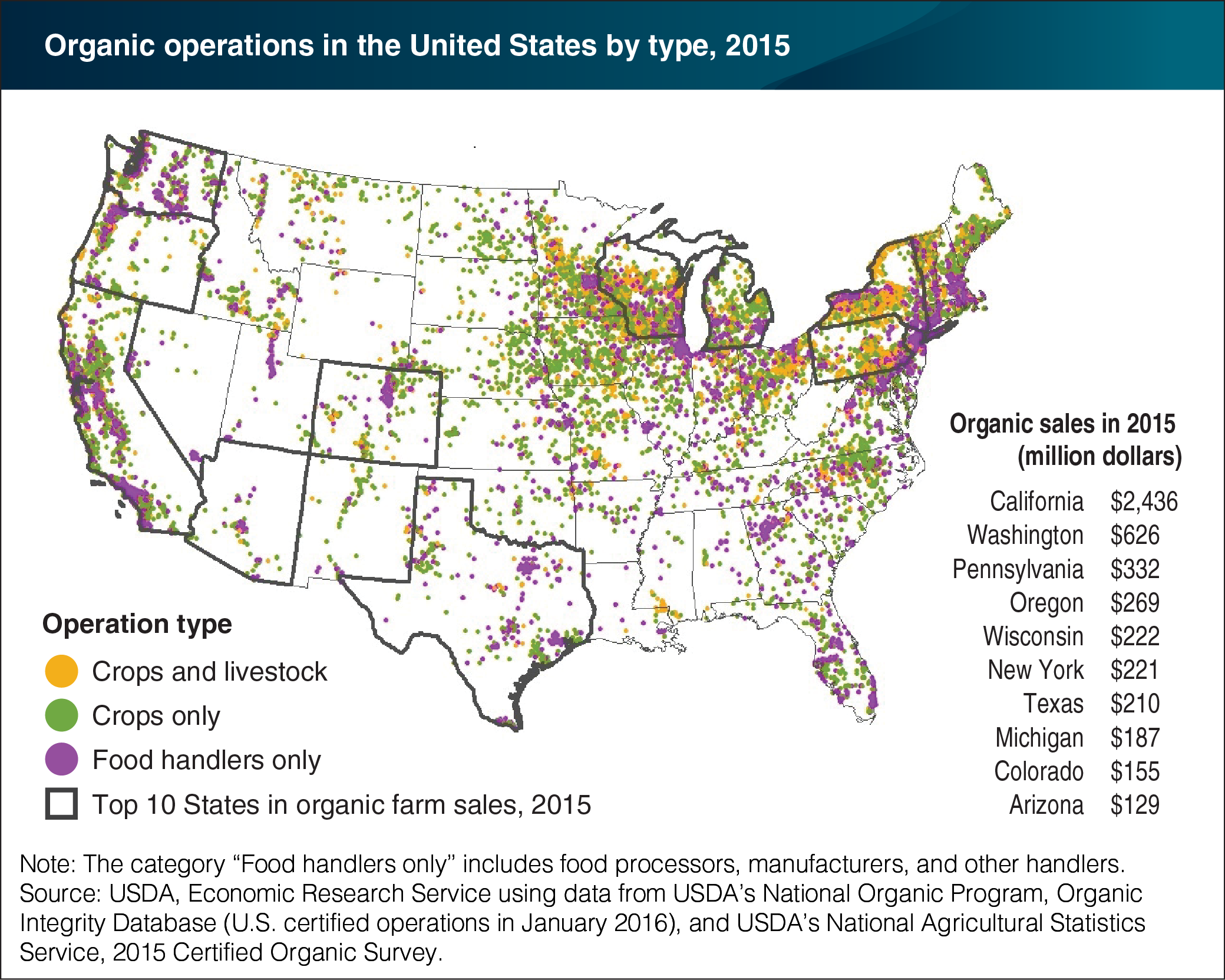Certified organic operations are concentrated in the West, Northeast, and Upper Midwest
- by Claudia Hitaj
- 5/30/2017

Although all 50 States have some organic production and processing, the proportion of farms that are certified organic varies across commodities produced and regions. Data from USDA’s organic regulatory program show that organic farm production and food-handling operations are concentrated in California (the country’s top fruit and vegetable producer), the Northeast (which has many small-scale organic farms), and the Upper Midwest (a major producer of organic milk). Northeastern States have the highest share of certified organic farmers, particularly Vermont and Maine, where about 5 to 6 percent of all farmers are certified organic. Organic processors, manufacturers, and other food-handling operations are concentrated around large metropolitan areas, while certified organic livestock operations are located predominantly in the Great Lakes region. The top 10 States for organic farm sales (see table to the right of chart) accounted for 78 percent of the total value of all U.S. certified organic commodities sold in 2015. California alone contributed 39 percent of total U.S. organic farm sales. This chart appears in the February 2017 Amber Waves feature "Growing Organic Demand Provides High-Value Opportunities for Many Types of Producers."

